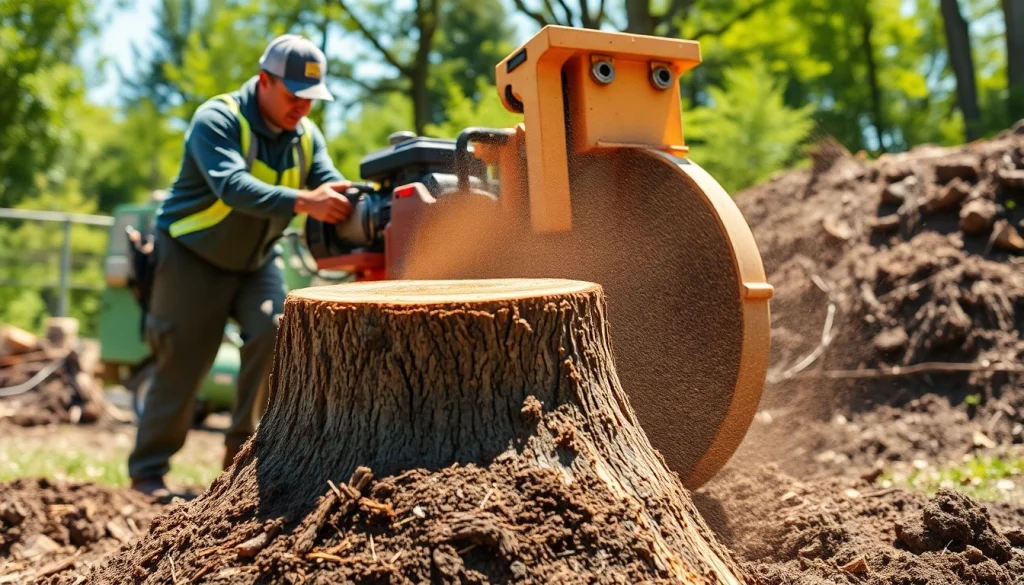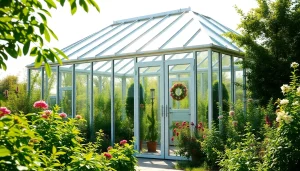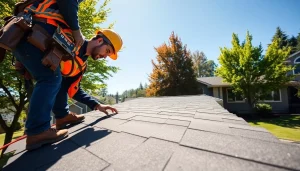Understanding Stump Grinding Services
What is Stump Grinding?
Stump grinding is a specialized service that removes tree stumps from the ground after a tree has been cut down. Unlike traditional tree removal that leaves behind a visible stump, stump grinding utilizes heavy machinery, known as stump grinders, to reduce the stump into small wood chips and mulch. This process not only eliminates the stump but also allows for the restoration of the landscape without the need for invasive digging or extensive disruption to the surrounding area. It’s an efficient and clean solution for removing unwanted remnants of trees from your property.
Benefits of Stump Grinding vs. Traditional Tree Removal
When comparing stump grinding to traditional tree removal methods, several key advantages emerge. Firstly, stump grinding is less labor-intensive and can be completed in a timely fashion. Traditional removal may require digging up the root system, which can damage surrounding plants and soil structure. In contrast, stump grinding minimizes this risk by focusing solely on the visible parts of the stump. Additionally, stump grinding service is often more cost-effective as it requires less manpower and time.
Secondly, stump grinding preserves the landscape aesthetics. By grinding a stump below ground level, homeowners can seamlessly integrate that portion of the yard back into their landscape design, allowing for new planting or garden features without the obstruction of a remaining stump. Furthermore, it eliminates hazards associated with stumps, such as tripping or potential pest infestations.
How Stump Grinding Works: A Step-by-Step Process
- Assessment: The process begins with an assessment of the stump and surrounding area. This helps determine the appropriate equipment and techniques to be used.
- Preparation: Before grinding can commence, the area around the stump is cleared to create a safe and accessible workspace. This includes removing any debris, rocks, or vegetation within a reasonable radius.
- Grinding: A stump grinder is then brought in, which features a rotating blade designed specifically to grind the stump down into small chips. The operator carefully positions the machine at the stump’s surface level and begins the grinding process.
- Depth Control: As the grinder works, the operator adjusts the height to ensure that the entire stump is ground down to below ground level, typically between 4 to 12 inches deep.
- Cleanup: After grinding, the remaining wood chips can either be left on-site to decompose or removed, depending on the homeowner’s preference.
- Restoration: Finally, any holes left by the grinding process are filled with soil or mulch, ready for replanting or re-sodding.
Choosing the Right Stump Grinding Service
Factors to Consider When Hiring a Stump Grinding Company
Selecting the right stump grinding service involves considering several critical factors. Firstly, ensure the company is fully insured and licensed, which provides protection and guarantees their compliance with local regulations. Secondly, inquire about the experience of their technicians. Experienced personnel are more likely to handle various stumps, including challenging ones with extensive root systems.
Additionally, ask about their equipment. Modern machinery can significantly impact the efficiency and effectiveness of the grinding process. Finally, consider their availability and response time, as timely service can be crucial if the stump removal is part of a larger landscaping project.
Reading Reviews and Testimonials for Trustworthy Services
Reviews and testimonials play an important role in assessing the credibility of stump grinding services. Customers often share their experiences, providing insight into the quality of workmanship and customer service. Look for consistent positive feedback, particularly concerning timeliness, professionalism, and cleanliness.
Online resources such as Google Reviews, Yelp, and industry-specific forums can be excellent places to start. Additionally, asking friends, family, or neighbors for recommendations can lead you to reliable local services. Don’t hesitate to contact previous clients for their opinions, as firsthand accounts can be invaluable decision-making tools.
Cost Estimates for Stump Grinding Services
The cost of stump grinding services can vary widely based on several factors, including the size of the stump, the complexity of the job, and local market rates. On average, homeowners can expect to pay between $75 to $1,000 for stump grinding, with most being in the range of $100 to $400 for standard residential stumps. However, it is advisable to obtain multiple estimates from different service providers to ensure you receive a fair and competitive price.
It’s also beneficial to ask about what’s included in the quoted price. Some companies might offer additional services such as cleanup or filling of the stump hole, while others may have separate charges for these services. Understanding the full scope of costs involved will help in budgeting and planning for your stump removal needs.
Common Challenges in Stump Grinding
Addressing Safety Concerns During Stump Removal
Safety is paramount during any stump grinding operation. Operators must be trained in the proper use of equipment to avoid accidents. The primary safety concerns include flying debris, which can result from the grinding process. Operators should wear protective gear, including eye protection and gloves, and ensure that bystanders are at a safe distance.
Moreover, the presence of underground utilities poses a risk. It’s crucial for the stump grinding company to conduct utility locates before starting the job to avoid damaging electrical, gas, or water lines, which can lead to serious safety hazards and costly repairs.
Dealing with Difficult Terrain and Conditions
Certain terrains can present significant challenges during stump grinding tasks. Steep slopes, uneven ground, and soft, saturated soils can hinder access and increase the risk of equipment failure or accidents. In such situations, using a smaller, specialized stump grinder can be beneficial, as they are often more maneuverable and can work in tighter spaces where larger machines cannot.
Additionally, if the stump is located in a densely landscaped area, operators may need to devise creative solutions to safeguard nearby plants and structures during the grinding process. Knowledgeable professionals will have techniques and strategies to navigate these challenges while still ensuring a thorough and efficient stump removal.
What to Do If the Stump Resprouts
Stump resprouting can be a common issue after grinding, particularly with certain tree species such as willows and oaks. If you notice new shoots emerging from the ground, there are a few approaches to control this regrowth. One effective method is to apply a good herbicide, which can help kill the remaining root system and prevent new growth.
Alternatively, some homeowners choose to simply keep cutting back the new shoots as they appear. This method requires consistent effort but can be effective over time. It’s always advisable to consult with a landscaping professional for tailored advice, as they can provide specific recommendations based on the species and situation.
Best Practices for Stump Grinding
Preparing Your Yard for Stump Grinding
Prior preparation of your yard can facilitate a smoother stump grinding process. Begin by clearing the area around the stump of any obstacles such as rocks, furniture, and vegetation. This not only ensures a safer environment for the workers but also reduces the risk of equipment damage.
Additionally, consider marking the stump and the surrounding area with flags to alert the crew to specific features you wish to protect, such as flower beds or sprinkler systems. Open communication with your stump grinding service about any concerns or areas to preserve will lead to a better outcome and the avoidance of accidental damage.
Aftercare Tips for Your Landscape Post-Grinding
Once the stump grinding is complete, taking care of the area is vital for the health of your landscape. After the grinding, the hole left can be filled with topsoil or mulch to create a level surface. This not only stabilizes the ground but also enhances the aesthetic appeal of the landscape.
Furthermore, if you plan to plant new shrubs or flowers in the area, wait at least a few weeks to allow the wood chips and ground material to decompose. This process can attract insects or cause nutrient imbalances if new plants are introduced too soon. As a best practice, monitoring the area for pests or any signs of disease is crucial, ensuring that your landscape remains healthy and vibrant.
Preventing Future Stump Problems
To safeguard against future stump issues, choosing the right tree species for planting is critical. Certain trees, when cut down, are more likely to resprout than others. Hence, understanding the growth patterns and habits of these species can mitigate future stump problems. Additionally, regular maintenance of existing trees, including pruning and health assessments, can minimize the need for removal and subsequent grinding.
For any tree that requires removal, ensure it is fully dead before cutting as live trees are more prone to re-sprouting post-grinding. Consulting with a qualified arborist before making decisions on tree removal can help you identify not just trees in poor condition but also potential healthier alternatives for planting that will thrive in your landscape.
Measuring the Success of Stump Grinding Services
How to Evaluate the Results of Your Stump Grinding
After the completion of a stump grinding service, evaluating the results is essential to ensure that the job meets your expectations. Initially, check the depth of the grind; ideally, it should be at least 4 to 12 inches below ground level depending on your future plans for that area. A successful grind will leave little to no remnants of the stump visible above ground.
Furthermore, assess whether the area has been left clean and tidy, with all debris appropriately disposed of or left as decided upon. If the contractor has filled the hole adequately and leveled the area for future planting, these are indicators of a job well done.
Long-Term Benefits of Professional Stump Grinding
The long-term benefits of professional stump grinding should not be underestimated. By effectively removing the stump, homeowners can reclaim valuable yard space that can be utilized for new planting, landscaping features, or increased recreational areas. Moreover, avoiding root die-back can contribute to the overall soil health and quality, ensuring other plants in the vicinity flourish.
Engaging professional services also ensures that the job is completed with the right machinery and expertise, significantly reducing the likelihood of future issues related to regrowth or pest infestations. Using top-notch equipment and techniques not only efficiently solves immediate stump problems but paves the way for a healthier and more visually appealing property over time.
Tracking Landscape Health After Stump Removal
After stump grinding, tracking the health of your landscape can gauge the effectiveness of the stump removal process. Monitor the area for signs of new growth, soil stability, and overall plant health. Regularly inspecting the vicinity for potential pest infestations or fungal growth can catch any issues before they escalate.
Additionally, maintain the soil’s health by adding organic matter or compost to support new plantings. Engaging in regular landscaping practices such as watering, mulching, and occasional soil testing can go a long way in sustaining a vibrant and healthy garden.








